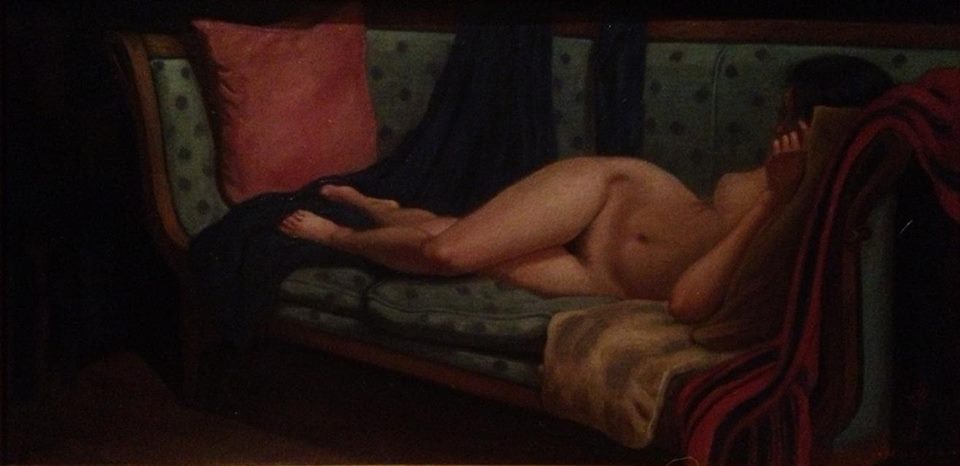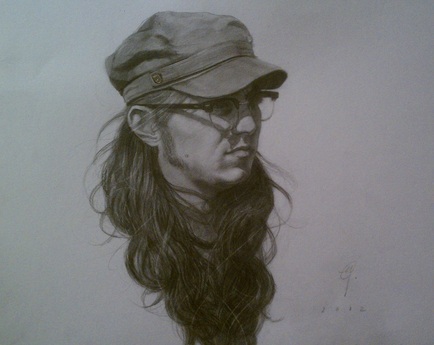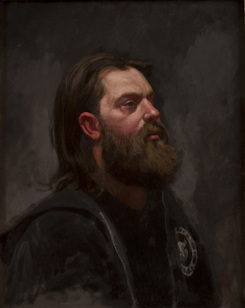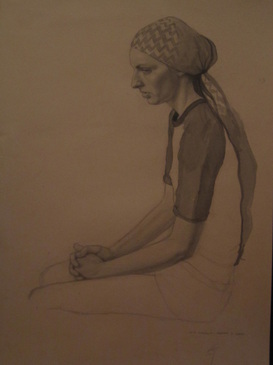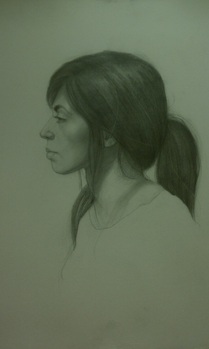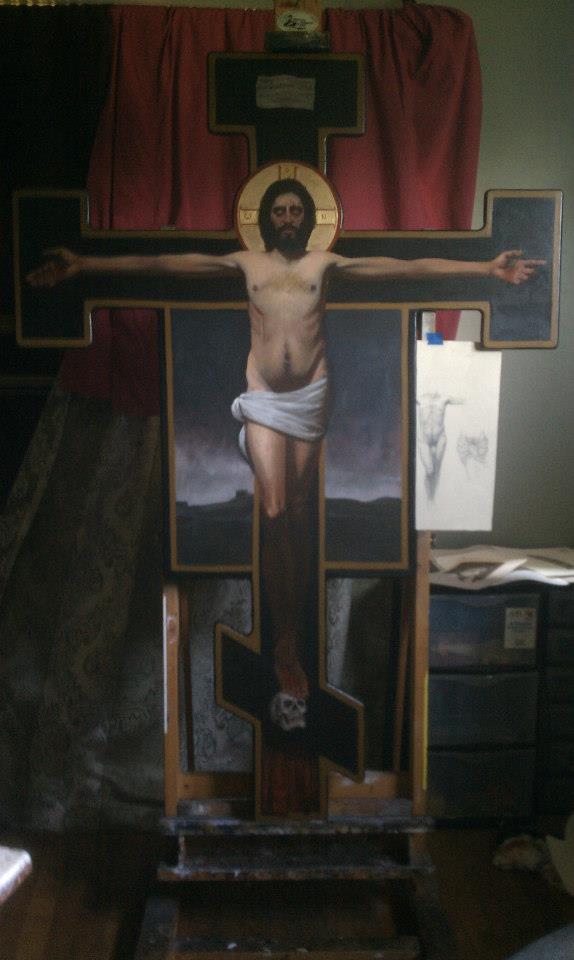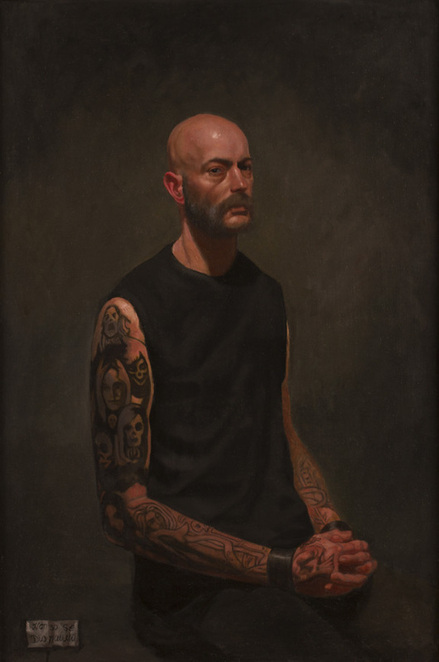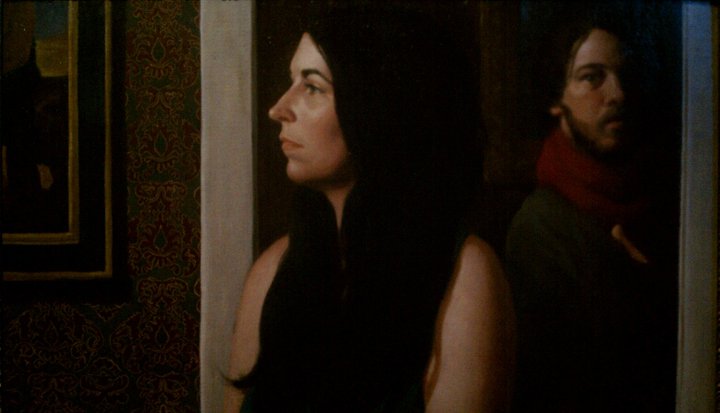Here is the second installment in a series: Catholic Artist of the Month. Rather than constantly kvetching about mediocre, sentimental art by Christians, I’ll be featuring artists who are doing it right. Last month (okay, it was two months ago! June was . . . rough), I had a wonderful conversation with Timothy Jones.
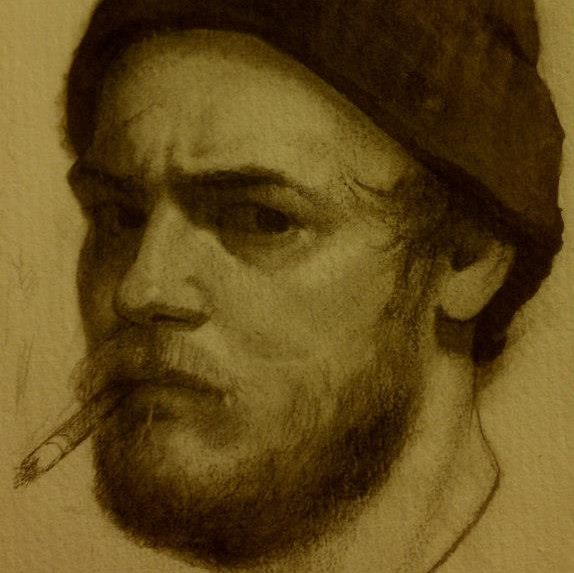 This month, I’m featuring Matthew S. Good, 31, who lives and paints in Hickory, North Carolina. His paintings are moody and intense, reminding me of Rembrandt, and it took several weeks to find a time when he was available to talk. I was somewhat nervous, expecting a reticent, brooding artist type. Instead, I was delighted to find myself chatting with a cheerful, self-deprecating fellow with a quick wit and a thick Southern accent.
This month, I’m featuring Matthew S. Good, 31, who lives and paints in Hickory, North Carolina. His paintings are moody and intense, reminding me of Rembrandt, and it took several weeks to find a time when he was available to talk. I was somewhat nervous, expecting a reticent, brooding artist type. Instead, I was delighted to find myself chatting with a cheerful, self-deprecating fellow with a quick wit and a thick Southern accent.
Good has been apprenticed under Benjamin S. Long IV for several years.
Good’s work can be found at matthewsgood.com, and he blogs sporadically, mostly about the technique of painting. He has a large collection of studies in storage, and intends to list more of them on eBay.
Here is part of our conversation. My questions are in bold.
******
Have you always known that you wanted to be an artist?
I’ve always drawn. When I was about twenty, I saw Raphael and [Flemish Baroque painter Anthony] van Dyck, who are heroes of mine. I bought a bunch of pigment for oils, and made about three hundred terrible paintings. I had no formal training; it was just trial and error.
What is the thing you’ve struggled with most as you improve as a painter? What did you really need to learn?
An understanding of anatomy. Drawing is all about how light hits the form. If you don’t understand the form you’re looking at, you can’t understand what’s going on.
That’s a big thing [Long] pushes: learning anatomy, and just drawing. A lot of great painters that hardly draw anymore. Even if you go to restaurant, you should draw people when they’re not looking. Draw, draw, draw; practice, practice, practice; patience, patience, patience.
It looks like most of your training has been private.
I never went to art school. I’m in a personal apprenticeship with Benjamin S. Long IV. He’s renowned for his true frescoes. The first one was in Italy, in Lucignano, where he lives half the year. It was a memorial to one of his friends.
There are thirteen or fourteen frescoes here in North Carolina. It’s the highest concentration of frescoes outside of Europe. The one I helped him with was three years ago. I helped grind colors, get the plaster ready, clean brushes.
How does that work, being an apprentice?
I work with him on a weekly basis with oils and drawing. He doesn’t tell me how to do anything . It’s helpful to work on your own as much as you can; but it’s really helpful to have him there when you get into a bind. “Look at this, see how bad I am!” His whole thing is that you never use photographic references; use models.
I notice that a lot of your models don’t look like privileged people. They look like they just got off work, or just stepped out of a bar. They have tattoos.
They’re all my friends! It’s important to me to paint my friends. There’s a whole variety of people I paint, and I don’t choose one type or another.
Well, they look like lovely, wonderful people! But I mean that you show all of your subjects with a great amount of dignity.
That’s very important to me. Rembrandt is the top. One thing I really love about his work the psychology in his paintings. Peasant, aristocrats — he painted them all with dignity. No person is more important than the other.
That emphasis on people’s dignity seems very Catholic to me. You are Catholic, right?
Yes, I am. I’ve done commissions for churches, but I don’t put a lot on my website about liturgical art. I love my faith, but I am a sinner. I struggle with my faith. This is the big thing: I believe in loving absolutely everybody. Some of my deepest friends are from all faiths and walks of life. I don’t select only Catholic for friends.
Is there any particular kind of religious art that you especially enjoy?
I love all religious art. It’s in a public space, you don’t have to go into someone’s hallway to see it. And there’s a narrative to religious art, which is just the pinncacle of art, for me.
Is your family artistic?
No, I don’t know where it came from. I drew with my friends as a kid all the time. Michelangelo is the first artist I really loved.
What did your parents think when you said you wanted to be an artist?
They love it. A lot of my artist friends’ parents hate the idea, but my parents are very proud of me. My parents are both Protestant, very humble religious people. They have never tried to tell us we have to make a lot of money to be successful.
I’ve been making a living as an artist for five years now. I scrape by. I do travel to Italy!
Who are some of your favorite artists who are working now?
My favorite living painter, Ben Long, paints the life around him. He does large frescos, multi-figured paintings, and he doesn’t doctor it up. He paints life solely from observation, and he has a humble approach to the world around him.
I also love Steven Assael, who is not religious.
And I’ve never met him, but Neilson Carlin does religious work on a great scale, very beautiful work.
Do you see any kind of return to the kind of art that you enjoy? It seems like people are getting tired of ugly and bland things and are thirsting for beauty.
Believe me, my fingers are crossed. John Paul II and Benedict have talked about bringing back art into the Church. It does seem like there’s a growing interest.
A lot of us are very anxious to return to the traditions of the church. I’m not militantly opposed to Vatican II, but traditional settings more reverent. Modern spaces aren’t thought through the way they used to be. “Traditional” doesn’t necessarily mean repeating the past word for word, but I don’t see why we have to disregard thousands of years.
What kind of work would you most like to be able to put your name on?
Any sort of narrative from scripture or from the saints. This is something I would really like to get into. It’s hard doing it on your own. I don’t have much resources for models. Just doing paintings for churches would be my dream job.
But you weren’t raised Catholic.
I was raised Lutheran. In high school, I didn’t know if I believed. It must have been when I was 19, I went on a little journey: Presbyterian, Methodist, Episcopal. I wasn’t even sure if I could go to Mass, but I went, and I could see something special was going on. I got some library books on Catholicism, and appreciated the theology.
Ten years ago I converted. It’s a beautiful. I love the Catholic Church. You don’t hear much about sacraments in protestant churches, but it’s the most important thing we’ve got here.
*****
Are you a Catholic artist, or do you know one who would be available for interview? Send me a tip at simchafisher[at]gmail[dot]com.
